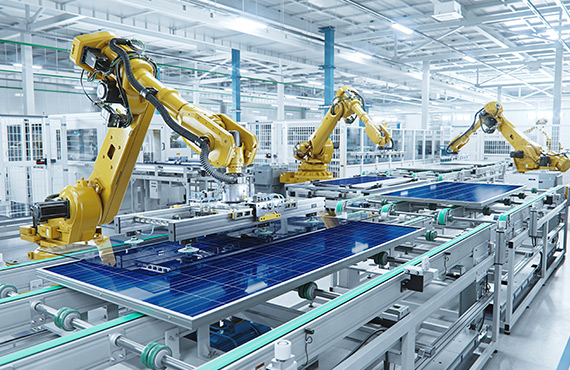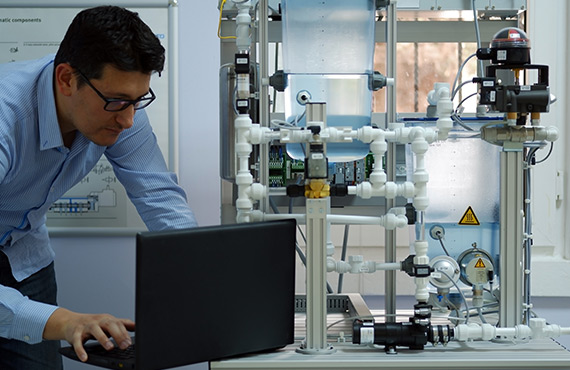
Today's cutthroat manufacturing landscape can lead to significant financial losses.
Unexpected periods of inactivity are to blame. They can also put a company's ability to meet critical deadlines at risk.
Yet, many facilities still rely on outdated process control systems. These systems are prone to malfunctions and interruptions.
This article explores how the latest intelligent systems optimize operational uptime. It also looks at how industrial valves do the same. By simplifying complex production processes, companies can cut costs. They can also maintain high quality and safety standards.
Keep reading. You'll discover how businesses of all sizes can enjoy these advanced technologies.
The Expensive Consequences of Downtime
Downtime comes at a steep price for manufacturers. Research shows that the average cost of downtime is $20,000 per minute. This means that every hour of downtime results in an average loss of $1.2 million in production.
Equipment failures, scheduled maintenance, and human error are the primary causes of downtime. Outdated process control systems are particularly susceptible to equipment failures. This is due to aging components and lack of connectivity. When critical equipment fails, it can bring an entire production line to a standstill. This can last for hours or even days.
This loss of production impacts revenue and reputation. Manufacturers struggle to meet customer demand and risk losing valuable clients. Downtime also leads to decreased equipment use rates. This results in significant revenue losses and a tarnished brand image.
Minimizing downtime is crucial for safeguarding revenue streams and fulfilling customer commitments. Upgrading to advanced process control systems can help you stay competitive.

Challenges with Legacy Systems
Manufacturing facilities often rely on outdated and aging process control systems. These systems are prone to failures and unplanned downtime. Many of these legacy systems have been in use for 20, 30, or even 40 years. Replacement parts are hard to come by. These systems also cannot use newer technologies.
Advanced sensors and data analytics are essential. They integrate modern solutions into legacy infrastructure. But, we face the challenge of isolating and disconnecting much of the necessary data. This forces operators to control processes and make adjustments. It is time-consuming and inefficient.
Outdated process control systems worsen the problem. They lead to inefficient operations and waste. These systems lack the sophisticated algorithms and modeling capabilities of modern systems. As a result, critical process parameters fluctuate, leading to excessive variability and defects. Besides, legacy systems miss opportunities to optimize yields. They also miss chances to reduce off-spec production and use assets.
Industrial facilities can use advanced process control (APC) systems. These systems can address these issues. These systems offer a range of features. They surpass traditional distributed control systems (DCS). Model predictive control (MPC) uses dynamic process models and optimization. It predicts future behavior. It calculates optimal control inputs. This enables greater precision and stability.
Another feature, multivariable predictive control (MVP), handles interactions between many process variables . MVP systems can maximize throughput for bottleneck units. They do this by coordinating the process as a whole.
Soft sensors and virtual analyzers offer real-time data analysis. Operators can track and optimize processes without physical sensors.
Industrial facilities can use advanced process control solutions to achieve tighter control. They can also use them to improve product quality and optimize operations. This helps them overcome the limitations of legacy systems.
Also, tight process control is crucial for reducing variability and waste. Legacy systems with fixed setpoints cannot adapt to changing conditions. This leads to sub-optimal operations. In contrast, APC solutions use algorithms and predictive models. They adjust variable setpoints in real-time. This enables much tighter control and the ability to respond to disturbances.
The optimization algorithms used in APC leverage deep process knowledge and modeling. This allows the system to find the ideal operating point. It maximizes throughput and profitability. Operators can free up themselves to focus on higher level tasks. APC maximizes uptime and eliminates bottlenecks, improving OEE.
Digital transformation in the process industries introduces new cybersecurity risks. These risks impact control loops that regulate industrial processes, such as chemical processing. Legacy PID controllers in chemical plants and oil refineries were not designed with cybersecurity in mind. Now, they could disrupt production or safety as potential attack surfaces. Manufacturing plants are becoming more connected due to digitalization.
It is crucial to secure field devices and controlled variables from cyber threats. Operational technology and industrial control systems track oil and gas or chemical processing. In today's networked environment, we must safeguard them.
Cybersecurity is now a key priority for all facets of industrial operations. It ranges from the manufacturing process to final products. This is to protect intellectual property. It also ensures personnel safety and continuity of production.
Maximize Operational Efficiency
In industrial facilities, maintaining a high level of uptime is crucial. It ensures productivity and profitability. Even a single minute of unplanned downtime can have a significant impact on the bottom line.
Yet, many legacy systems lack the necessary capabilities to prevent failures. They also fail to avoid costly disruptions. Advanced process control systems come into play here. These features help maximize uptime and optimize operations.
Proactive Maintenance
Advanced process control systems have a primary benefit. They can enable preventive maintenance. By using predictive analytics, these systems can track equipment health and performance. They can identify potential issues early, before they cause shutdowns.
Sensors measure factors like temperature and vibration. Condition-based maintenance uses this data to schedule maintenance as needed. It does not use a fixed calendar. This not only prevents premature repairs but also minimizes the risk of failures.
Early Detection Problems
Advanced process control systems also have a crucial capability. They can detect anomalies and deviations. These systems can identify problems in their early stages. This happens long before they become major issues. They do this by employing advanced algorithms. This early diagnosis allows for prompt action to be taken. This minimizes downtime and prevents further complications.
Remote Monitoring and Diagnostics
With cloud connectivity, operators can now track HMI screens. They can also analyze data trends. This lets them identify potential problems from anywhere. It provides a level of flexibility and convenience that was before unimaginable. Some advanced systems even enable secure remote troubleshooting by experts. This eliminates the need for them to be present on-site.
You can also send critical alerts to mobile devices. This ensures that personnel can respond to any issues that arise.
Manufacturers can adopt a proactive approach to maintenance by harnessing these capabilities. This proactive approach reduces unplanned downtime. It also cuts costly emergency repairs.

Advanced Process Controls Result in Significant Cost Savings
Optimizing operations, maximizing uptime, and increasing productivity are crucial for any company.
Companies can save money by upgrading to advanced process control systems. Proconex offers these systems. This happens through various means.
- Predictive analytics identify issues before they cause failure. This can reduce downtime and maintenance costs for companies.
- Real-time optimization and precision control improve yields and throughput. They result in increased productivity.
- Energy efficiency: Analyzing data allows companies to cut waste and lower energy costs.
- Automated workflows: By implementing automated workflows, companies can enhance operational efficiency.
In conclusion, advanced process controls deliver significant returns on investment. They also future-proof operations. Learn more about how Proconex can optimize your specific processes. Request a consultation with one of our process automation experts today.
Don't miss out on potential savings. Start your journey towards increased profitability today.
